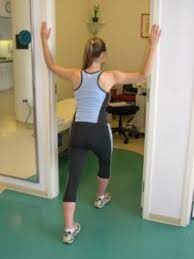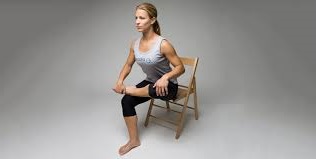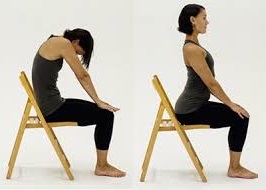Do you ever catch yourself hunched over your keyboard, shoulders tight, neck strained, and lower back aching after a long day of work?
Do those small twinges in your back turn into bigger discomforts by the end of the week?

If this sounds familiar, you’re not alone.
For many desk workers, long hours at a computer can silently lead to posture problems and chronic pain, especially in the neck and lower back. The good news? A few mindful changes to your routine—along with chiropractic care—can significantly reduce pain and help you thrive at your desk.
Let’s explore how to minimise “tech neck” and lower back pain while working long hours, ensuring your body stays strong and supported.
The Impact of Desk Work on Your Body
“Tech neck” refers to the strain caused by looking down at screens for long periods, often leading to tightness in the neck, headaches, and upper back pain. Meanwhile, lower back pain is another common issue for desk workers, often stemming from slouched sitting postures or prolonged periods of inactivity.
Poor desk ergonomics and a lack of movement can cause the following:
- Forward head posture (where the head juts forward)
- Rounded shoulders
- Tight hip flexors
- Compressed lower back
- Decreased blood circulation
These habits, left unchecked, can cause muscle imbalances and joint restrictions that eventually impact your energy, concentration, and overall well-being. But the right strategies can reverse these effects!
Tips to Avoid Tech Neck and Lower Back Pain
1. Set Up an Ergonomic Workspace
Screen height: Align your computer monitor so the top of the screen is at eye level.
- Chair support: Use a chair with lumbar support, or roll up a towel to support your lower back.
- Keyboard and mouse: Keep your wrists straight and your elbows at a 90-degree angle to reduce strain on your shoulders and wrists.
- Desk height: Your desk should allow you to sit with your feet flat on the floor and your knees at hip level or slightly lower.

2. Posture Reminders: Think Tall!
- Imagine a string pulling you gently from the top of your head to the ceiling.
- Keep your shoulders relaxed and down (not up toward your ears).
- Slightly tuck in your chin to maintain a neutral neck position.
3. Incorporate Movement Breaks
Taking breaks every 30-60 minutes can improve circulation and reduce muscle stiffness. Stand up, walk around, or perform quick stretches to reset your posture and refresh your mind.
4. Simple Stretches to Relieve Tension
Try these stretches during your breaks:
Neck Stretch
- How: Gently tilt your head toward your shoulder and hold for 20 seconds on each side.
- Why: Relieves tension in the sides of the neck.


Chest Opener
- How: Stand in a doorway, place your hands on the frame, and step forward to open your chest.
- Why: Loosens tight chest muscles from hunching.
Seated Hip Stretch
- How: While seated, cross one ankle over the opposite knee, and lean forward slightly. Hold for 20-30 seconds.
- Why: Eases tightness in the hips from sitting for long periods.


Cat-Cow Stretch (Seated Version)
- How: While sitting, alternate between arching your back (cow) and rounding it (cat).
- Why: Promotes spinal mobility and prevents stiffness.
The Role of Chiropractic Care
At Activtherapy Gregory Hills, we help desk workers like you address the root causes of neck and back pain. Chiropractic adjustments can help to re-align the spine, improving posture and releasing tension from overworked muscles. With regular care, you can move more freely, reduce pain, and stay productive throughout your workday.
We also use postural assessments to pinpoint muscle imbalances and provide targeted solutions, including:
- Applied Kinesiology techniques to balance muscle function
- Soft tissue work to ease tight muscles and promote better mobility
- Clinical Pilates to strengthen weak areas and correct posture
Empower Yourself to Feel Better at Work
The way you sit, move, and care for your body can make all the difference. Don’t wait until minor discomforts become big issues—start taking steps today!
Here’s what you can do now:
- Assess your desk setup—small ergonomic adjustments can go a long way.
- Set reminders to stretch and move throughout the day.
- Book a chiropractic consultation to address any current pain and minimise future discomfort.
At Activtherapy Gregory Hills, we specialize in helping desk workers feel their best. Whether you’re already experiencing pain or want to stay proactive, we’re here to support you every step of the way.
Take the first step toward a healthier, pain-free workday.
Call us today to schedule your appointment!

